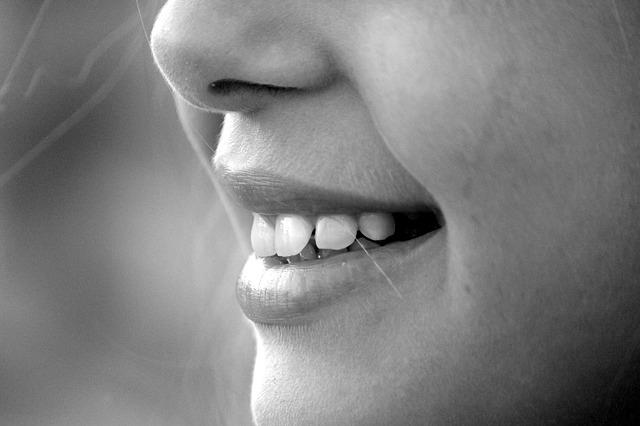Archive for January 2017
How to Exercise at your Desk
Your body dreads the prospect of sitting for 8 hours a day
But it necessarily takes a backseat to pulling in the daily dough. While making money is important, so is the health of your body and in particular your spine. Below you will find ingenious exercises that target the core to help you maintain good posture and keep pressure off your lower back. If you must sit at a desk, lend your body a little slack by using the office chair and desk to pull off a few exercises every hour.
- Sneaky buns and obliques: just squeeze. Squeeze your glutes and hold for 5 seconds before releasing and do the same with your core. This is the simplest and quickest way to start toning muscles that matter for posture.
- Chair running: recline in your chair and perform a cyclical motion with your legs as though you are riding a bike. The only trick here is to not let your feet touch the ground.
- Leg lifts: lift your legs off the floor and hold them straight in the air for up to 20 seconds. Let them down and repeat.
- Swivel in your desk chair: hold your feet just off the ground and grip the desk then slowly swivel from side to side.
Exercise is imperative but equally hard to come by during a 40-hour work week. At Scorca Chiropractic Center, we believe that getting your weekly dose of exercise may mean modernizing your attitude! Let’s work together to sneak workouts into your daily routine and start a miniature fitness revolution right from your desk; call our office in Fremont to schedule an appointment today!
Dr. Francis Scorca, D.C.
The Brain’s Hunger Games
Your brain is hungry, but how hungry?
For an organ that accounts for 2% of body mass, it uses up to 20% of the energy you put in, using up to three times as much oxygen as other muscles. It is constantly processing and therefore cycling through nutrients and oxygen at a much faster rate than the rest of the body especially when you are at rest. We must feed the beast!
Blood feeds the brain
The feeling of clear-headedness is determined by the amount of oxygenated blood that reaches the brain. Oxygen along with glucose are the two most important nutrients for keeping the brain energized and cells respiring, but there are a handful of other nutrients which need to be input to help you function your best.
Brain food includes:
-
B-complex vitamins
-
Vitamin C
-
Magnesium
-
Zinc
-
Calcium
Cerebral circulation refers to the flow of nutrients and oxygen to the brain cells and the flow of de-oxygenated blood, carbon dioxide and lactic acid back to the heart. The better our circulation, the more efficient this system works.
Ensuring good blood flow to the brain
- Watch your level of stagnation throughout the day: if you have been sitting for a couple hours straight, take a break, stand up and take a vigorous walk.
- Focus on breathing well: to get the oxygen you need for cellular respiration.
- Focus on food that is rich with nutrients beyond the bare minimum so that the circulation counts!
Dr. Francis Scorca, D.C.
Breathing to Beat Stress
Releasing the stress through deep breathing.
We are all aware of the maxim, “Take a deep breath!” and the wisdom is tried and true. In the heat of the moment, a deep breath will resonate with relaxing effects for your brain. So why stop at just one? Deep breathing is a legitimate tactic for beating back a pang of stress; but do we even remember how to take a deep breath?
Stress makes our breathing pattern shallow, and we seek to reverse this with deep breathing.
Notice that when you are stressed you often breathe quicker, with your chest expanding. In this type, known as thoracic breathing, you are drawing air into your chest using accessory muscles rather than into the lungs using your diaphragm. A deep breath is easy:
- Contracting the diaphragm, take in air through the nose
- Feel your lungs fill fully with oxygen, reaching the bottom where blood is circulating
- Hold in for a few seconds to let the oxygen saturate your cells.
- Breathe out fully- not exhaling fully is what causes breathlessness.
The benefits of a deep breath when fighting stress:
-
Blood circulates better which means that…
-
…the cells of your brain and body receive steadily refreshing supply of oxygenated, nutrient-rich blood
-
Blood pressure lowers
-
These benefits translate to a sharper mind and less tension in the body.
Balanced breathing fights stress further
If you truly need a refresh, try balanced breathing: inhale and hold four seconds, then exhale for four seconds. Combined with the health benefits above, the rhythm of deep breathing will help you feel much more relaxed.
Dr. Francis Scorca, D.C.
Cooling Down: Finish off Your Exercise on a High
Cooling down is essential for the ending of any work out.
One of the single most important elements of working out is patience. A work out should not be rushed, and if you are in a crunch for time, always cut short the work out and not the warm up. Nothing can be as traumatic for muscles as jumping into a vigorous exercise without warming up the muscles first. Likewise, you will get the most out of your exercise if you finish it off with a low-key cool down.
Elements of a good cool down.
While a warm up should be dynamic in nature, combining movement with stretching, the cool down can be of a more static nature. Since your muscles have already been warmed and active, you can finish off with a bit of gentle stretching. This helps to round out the exercise by slowing down the heart rate and stretching muscles which may have accumulated stress during the exercise, particularly those in the lower back. The child’s pose, for example, is a great way to elongate the spine, stretch your hips and practice deep breathing.
Exercise should flow from warm up to cool down.
A well-rounded exercise does wonders for the body and mind. If you have a physical complaint that prevents you from exercising, we want to help you rehabilitate and get back on your feet. From chiropractic adjustment to addressing muscle tension; from counseling on posture to simple stretches such as the child’s pose, we can help you escape from the cycle of muscle tension!
Dr. Francis Scorca, D.C.
Spirited Stretching: Warming up the Right Way
Warming up could be the most important part of your exercise.
If you are short on time, shorten the length of your workout not the warm up. If you get into a workout of any intensity with muscles that aren’t properly warmed up, you are asking for injury. Especially in winter, muscles start out cold and contracted- as body temperature rises during the warm up, muscles warm and loosen, allowing for the best range of motion and preventing injury that would occur when applying stress to an overly tight muscle.
Dynamic stretching is the best kind of warm up.
Dynamic stretching combines the momentum of movement with more traditional static stretches to make the transition from no activity to full activity smooth. Regardless of your chosen exercise type- high intensity interval training or light cardiovascular exercise, dynamic stretching will prepare the proper muscles for movement. Dynamic stretches often look like a standard stretch with an adjoined movement: for example, a hip stretch with a twist or a knee to chest movement.
At Scorca Chiropractic Center, we can show you the dynamic stretching that is best for your activity level.
No matter your fitness level, your muscles and your workout will benefit from a regular dynamic stretching routine. Like chiropractic, dynamic stretching is about optimization. At our office in Fremont, we help your body stay in great shape by devoting our attention to the health of your muscles and spine, improving range of motion and allowing you to excel with your fitness plan!
Dr. Francis Scorca, D.C.
Microexercise: 10 Minutes or Less
When it comes to feeling better start small, very small…
While you can’t change the overall state of your health in a night, there are steps you can take starting now to feel better on a regular basis. Microexercise is one of them and it is tailor made for a 21st century lifestyle in which we are moving less and less. A “micro-workout” may be as short as 60 seconds or as long as 10 minutes; the important part is that you get moving and get your heart rate up.
Short bursts of exercise can have the same effect as continuous exercise…
…as long as you do them throughout the day. Studies have showed that effects on cholesterol, blood pressure and calorie loss are more or less equal between people who get regular short doses of exercise and those who dedicate themselves to at least 30 minutes of continual exercise.
What are some good examples of microexercises?
-
Most office buildings have a staircase: care to run up and down a few times? If not…
-
Most cubicles have space for a set of dumbbells and a jump rope
-
Dance it out
-
Yoga in 1, 5 or 10 minute varieties.
-
If all else fails, plank for as long as you can possibly hold it!
Not only does the movement help to build and strengthen muscles, but it relieves your muscles from the monotony of constant contraction- this prevents that feeling of stiffness at the end of the day. Evidence clearly shows that short bursts of exercise will add up to great health benefits if you do them regularly. We want to help you get motivated and get moving! Call our office in Fremont to schedule an appointment today.
Dr. Francis Scorca, D.C.



